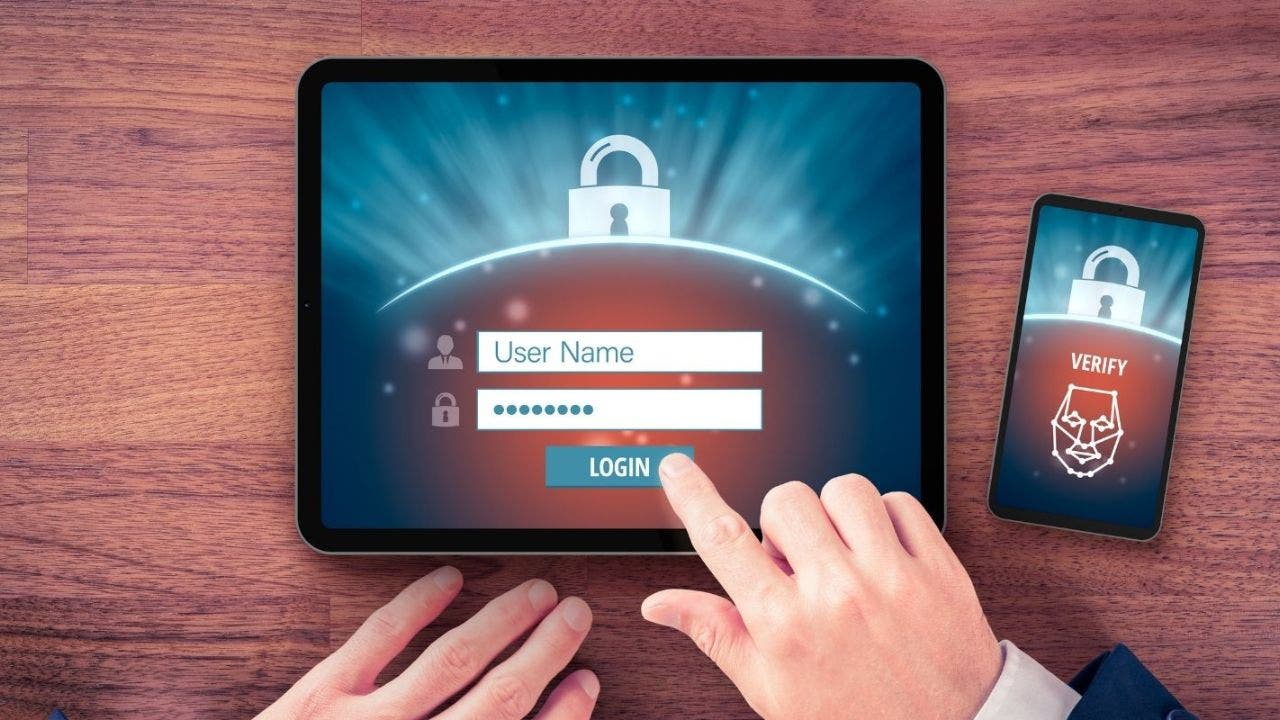Europe has an electric bike problem. Direct-to-consumer e-bikes from inexpensive Chinese brands like Engwe and countless others can be easily purchased online despite openly flouting EU restrictions. They feature throttles and powerful motors that can be easily unlocked to far exceed the 25km/h (16mph) legal speed limit — no pedaling required.
Technology
How to know if your computer got hacked, what to do next

Have you ever had that sinking feeling that something’s not quite right with your computer? Maybe it’s running slower than usual or there are new icons on your desktop that you don’t recognize. Well, you might not be just imagining things; you could have been hacked.
While the first reaction may be to panic, the best possible first step if you think you’ve been hacked is to disconnect your computer from the internet and take a deep breath. If you’ve got antivirus software already installed, run the scan immediately. But don’t worry just yet. Before you start fretting about cyberthieves and lost data, let’s take a moment to walk through some crucial steps together. From running a trusty antivirus scan to the nitty-gritty of browser settings and remote access – this is your go-to guide for outsmarting those pesky hackers.
GET SECURITY ALERTS, EXPERT TIPS – SIGN UP FOR KURT’S NEWSLETTER – THE CYBERGUY REPORT HERE
A woman grabbing her computer in frustration (Kurt “CyberGuy” Knutsson)
Were you hacked?
1. Run antivirus software ASAP
When you’re running any antivirus scans or troubleshooting, start from the actual antivirus software program. Don’t follow pop-ups or notifications. If there is indeed a compromise, it should show up on the dashboard of the antivirus software program.
Preventative:
- Keep your antivirus software updated. Hackers are coming up with new viruses often, so if you are up to date, you’re less likely to be compromised. Or the virus is more likely to get caught.
- Be familiar with your antivirus software notifications and alerts, so if you ever get a pop-up or notification, you’ll be more apt to notice fake ones.
- Write down the contact information of the antivirus software you’ve installed and have it near the computer.
If you feel pretty confident that you’ve unfortunately been hacked, but your antivirus scan comes up empty, take a break and call customer service of antivirus software directly. Do not follow links to have a rep call you. Use the number you’ve written down, and call them directly so you know you’re not being duped.
If you don’t have antivirus software installed, make sure to install one and do a computer scan. You can find our top recommendations here.
ASK ANY TECH QUESTION AND GET KURT’S FREE CYBERGUY REPORT NEWSLETTER HERE

A man typing on keyboard (Kurt “CyberGuy” Knutsson)
HOW TO RECOVER A HACKED FACEBOOK ACCOUNT
2. Reformat or reset to factory settings
Sometimes a virus or other nefarious entities have overrun the computer so badly that you might need to simply reformat or reset it to factory settings. If you’ve uninstalled or deleted suspicious programs or applications only to have them reload upon restarting your computer, you may simply need to start from scratch. This is why it is crucial to have recent backups of your data. Our article, “How to securely get rid of your old PC or Mac,” outlines how to reset to factory settings or reformat your computer.
EXPERT TIPS, LEGIT REVIEWS. GET THE FREE CYBERGUY REPORT NEWSLETTER
3. Delete settings or extensions on browsers or uninstall and reinstall browsers completely
There have been many times I have gone to help my mom with her online accounts, only to be inundated with pop-ups, redirects or random links on her browser bar or menu. It turned out that she had either accidentally downloaded extensions that embedded themselves in the browser or, worse, changed the browser setting to open a spammy website as her main search engine or landing page. You can go to settings or preferences and delete extensions you do not recognize. But if these settings or extensions keep reappearing after deleting and restarting the browser, it is likely a bigger problem. Then, uninstall the browser and see if you can reinstall it. If that brings up the same settings again, then it could be a much more invasive virus or malware that needs to be addressed with an antivirus scan or assistance from a professional.
HOW TO OUTSMART CRIMINAL HACKERS BY LOCKING THEM OUT OF YOUR DIGITAL ACCOUNTS
4. Turn off or restrict remote access
While it is harder for hackers to access your computer if it is completely turned off, if you have allowed remote access, a hacker just needs your computer to be hooked up to a network or the internet in order to take over your device and turn it on.
To prevent remote access to your PC:
- Click the Windows Start button
- Input Remote Desktop settings in the search bar
- In the Remote Desktop settings, ensure that the slider under “Enable Remote Desktop” is set to Off.
- Review your current processes in Task Manager (Ctrl+Alt+Del) for any unusual or suspicious activities
To prevent remote access on Macs:
- Click the Apple logo icon in the top left corner.
- Click System Settings
- Tap General
- Click the Sharing icon
- Scroll down and uncheck the boxes next to Remote Login and Remote Management to prevent unauthorized remote access.

A woman on her laptop (Kurt “CyberGuy” Knutsson)
HOW HACKERS CAN CRAFT AN ATTACK FROM YOUR SOCIAL MEDIA PROFILE
5. Review your activity monitor on your computer and network traffic patterns
Periodically, checking your computer’s activity monitor to check which programs are running and what is using up the most bandwidth is a healthy practice. It will teach you to spot any programs or traffic that is unusual or if someone else is connecting to your computer remotely.
To review this activity on your PC:
- Go to Control Panel
- Click Administrative Tools
- In Event viewer, look for the events that are related to startup and shutdown. Any shutdown will be listed there and which program or user-initiated that startup or shutdown. This way, you can see if these actions are that of a virus or an update process.
To review this activity on your Mac:
- Go to the menu bar on the top left when you first log on to your account.
- Select Go
- In the drop-down menu, select Utilities
- When a menu pops up, one of the first options should be Activity Monitor.
Or:
- Go to your Applications folder on your dock (usually located on the bottom or right-hand side of the screen)
- Go to Utilities folder
- Select Activity Monitor

A man putting in his username and password on tablet (Kurt “CyberGuy” Knutsson)
Top 3 preventative measures to not get hacked
1. Turn on 2-factor authentication
While it may seem like a pain to enter a code received via email or text each time you sign in, this extra step is crucial for security. By activating two-factor authentication, you create a barrier against unauthorized access. Even if a hacker discovers your email or username, they won’t get far without the unique code.
Each login attempt triggers a notification, alerting you to potential threats. Repeated failed attempts will secure your account by either locking it or sending you an alert. In the event of suspicious activity, you can swiftly use a trusted device to reset your password and inform the service provider. It’s a small price to pay for significant protection against cyberthreats.

A man backing up his computer (Kurt “CyberGuy” Knutsson)
2. Have strong antivirus software
The best way to protect yourself from clicking malicious links that install malware in an attempt to get access to your private information is to have antivirus protection installed on all your devices. This can also alert you of any phishing emails or ransomware scams. Plus, think of it like having a digital bodyguard – always on the lookout, always ready to defend you from cyberthreats. Get my picks for the best 2024 antivirus protection winners for your Windows, Mac, Android & iOS devices.
3. Configure your email settings

Configure email settings to not automatically images or attachments (Kurt “CyberGuy” Knutsson)
If you configure your email settings to not automatically load content such as images or attachments, then it is harder for viruses or other malware to be automatically downloaded or accidentally opened. If you also have emails received first in rich text format, you can choose which emails load fully with images once you realize it is from a trusted source.
Gmail desktop:
- Click the settings gear icon
- Choose See all settings
- Under the General tab, scroll to the Images section.
- Select Ask before displaying external images
- Scroll to the bottom of the page and click Save Changes
Gmail mobile:
- Tap the hamburger menu (3 horizontal lines)
- Select Settings
- Choose the account you want to manage
- Scroll to the Images section and select Ask before displaying external images.
Apple mail:
- First, click on Mail in your dock at the bottom of your screen
- Then click on Mail in the upper left of your screen
- Click Settings
- Go to the Viewing tab
- Uncheck Load remote content in messages
Outlook desktop (PC):
- Click File
- Choose Options
- Select Trust Center
- Click Trust Center Settings
- Under Automatic Download, check the option that says Don’t download pictures automatically in standard HTML email messages or RSS items.
Outlook desktop (Mac):
- Open Outlook
- Click Preferences
- Under Email select Reading
- Choose Security
- Select Never to prevent image downloads
Yahoo Mail desktop:
- Click Settings.
- Choose More Settings.
- Click Viewing email.
- Under Show images in messages, select Ask before showing external images.
Start Mail desktop:
Please note that the exact wording of the menu items and options can vary based on the version of Start Mail you are using.
- Open Start Mail
- Click on the Settings icon
- Navigate to the Email section
- Look for the Images or Privacy settings
- Choose the option to Ask before displaying external images or a similar setting that controls the automatic downloading of pictures.
These steps should help enhance your email security by giving you control over which images are displayed, thereby reducing the risk of malware being automatically downloaded or opened. Always ensure your email application is updated to the latest version for the best security practices.
Looking for private and secure email solutions? See Best Private and Secure Email Providers 2024
QUICK TIPS. EXPERT INSIGHTS. CLICK TO GET THE FREE CYBERGUY REPORT NEWSLETTER
Data recovery: Protecting your information against loss
This may not seem relevant to an article about hacking, but having your data off your computer and safely on an external hard drive or the cloud will give you more options if you think you’ve been hacked. If you need help deciding what type of data backup would be best for you, please take a look at these articles:
If a hack is bad enough, sometimes a complete wipe of your system is the only way to salvage your computer. If you have a safe copy of your data, while it might be inconvenient, you will not lose all your data. Also, if you keep more sensitive data off your more frequently used computer, then your data is less likely to be compromised if you get hacked.
Kurt’s key takeaways
At the end of the day, being hacked is a massive inconvenience and can potentially lead to data loss or theft. But don’t lose hope. There are steps you can take to outsmart those pesky hackers and keep your devices secure. The key is staying vigilant and taking preventative measures like using strong antivirus software, enabling two-factor authentication and regularly backing up your data. That way, if you do get hacked, you’ll have a recent backup to rely on and can simply wipe your device clean without losing everything.
It’s also crucial to keep an eye out for any suspicious activity on your computer or network. If something seems off, don’t hesitate to run a full antivirus scan and review your activity monitor for any unauthorized access or programs running in the background. Remember, hackers are always coming up with new tricks, so it’s an ongoing battle to stay one step ahead. But by following the tips outlined here, you’ll be well on your way to keeping your digital life secure and hack-free. Stay vigilant, my friends.
Can you share a personal story where being proactive about computer security paid off or, conversely, where neglecting it led to issues? Let us know by writing us at Cyberguy.com/Contact.
For more of my tech tips and security alerts, subscribe to my free CyberGuy Report Newsletter by heading to Cyberguy.com/Newsletter.
Ask Kurt a question or let us know what stories you’d like us to cover.
Follow Kurt on Facebook, YouTube and Instagram.
Answers to the most asked CyberGuy questions:
Copyright 2024 CyberGuy.com. All rights reserved.

Technology
Engwe Mapfour N1 Pro e-bike review: the new ‘premium’

Here in Amsterdam, cheap Super73-knockoffs ridden at almost twice the legal speed have made the city’s renowned bicycle lanes increasingly chaotic and dangerous. Across the Netherlands, over 10,000 of these electric “fat bikes” were seized in 2024.
Engwe’s new Mapfour lineup is the company’s attempt at going legit by expanding from souped-up electric fat bikes and foldables into “premium commuter” e-bikes. And because they’re the first e-bikes that Engwe has designed exclusively for European roads, the company swears they can’t be unlocked for more speed.
I’ve been riding the new Mapfour N1 Pro model for the last few weeks. It lists for €1,899 (almost $2,000), or €1,799 during the initial launch — a price that brings heightened expectations.
The N1 Pro is slathered in premium capabilities like GPS/GSM tracking for which some bike makers charge subscriptions. The monocoque frame and fork are made from carbon fiber supplied by Toray — “the same high-quality carbon fiber as Trek and Specialized,” claims Engwe. There’s even turn-by-turn navigation built into the full-featured app, a large colorful display integrated into the handlebars, and a built-in mechanical lock in the rear wheel hub that automatically engages when the bike is turned off and stationary.
My review bike was missing a fender bolt, occasionally flashed a strange error code, and the solar-powered rear light won’t turn on. Still, it’s likely the highest quality electric bike Engwe has ever made.

$1714
The Good
- Looks and rides sporty
- Long list of features for price
- Removable battery
- Can’t be speed hacked
The Bad
- Strange error messages
- Servicing parts likely an issue
- Doesn’t support height range claimed
- Can’t be speed hacked
I have lots of experience with assembling direct-to-consumer e-bikes and the N1 Pro was ready to ride in about an hour, which is typical. Even with a carbon-fiber frame it weighs 20.1kg (44lbs) fully assembled according to my scale, which is heavy for an e-bike — just not Veloretti-heavy.

In the box you’ll find a basic toolset that includes everything needed for assembly and instructions written in stellar English unlike some previous Engwe tutorials I’ve read. I had to assemble the pedals, front wheel, kickstand, handlebar, and fenders, and fish out a replacement fender bolt from some spare bicycle parts I had lying around. I then went to adjust the saddle to my height only to discover that I was too tall for the N1 Pro.
The saddle stem has a marked safety line that stops well before the height needed for my 6 foot (183cm) frame, despite being sold in the Netherlands where I’m considered a short king. Nevertheless, exceeding the line by about 2.5cm (one inch) hasn’t made the saddle feel insecure, even when riding over rough cobblestones. Engwe claims the N1 Pro supports riders from 165–190cm, and is considering offering the option for a longer saddle stem at checkout based upon my feedback.
The N1 Pro’s geometry puts the rider into what’s essentially a mountain bike stance: a moderate forward lean with hands spread wide out in front of the body. That wrist and body angle combined with a rather stiff saddle are not ideal for riding long distances, especially in combination with a backpack that’ll put even more weight on the hands and derrière. I do like that fun, sporty posture over short distances, but if you’re looking for a more relaxed ride then Engwe has the upright €1,399 MapFour N1 Air available in both step-over and step-through frames.




The 250W mid-drive Ananda motor on the N1 Pro is nearly silent under the din of road noise, and the integrated torque sensor provides an intuitive pedal-assist at all speeds. It produces up to 80Nm of torque that lets me easily start from a dead stop in fourth gear (of seven) on flat roads, but testing on a hill with a gradient of about 15 percent required a start from first gear. Typically, I only needed to shift to a high gear when I wanted to use my leg power to propel the bike at speeds above the 25km/h motor cutoff.
Despite claiming a range of up to 100km from its modest 360Wh battery, my first test performed over a few weeks yielded just 23km off a full charge in near-freezing conditions. I usually rode in power setting three of five on mostly flat roads. The second test performed on a single warmer day improved the range to 27km with 28 percent charge remaining — or an estimated 36km if I had time to run the battery dry for a below average 10Wh consumed per kilometer travelled. The bike battery seems to suffer from idle battery drain of about 1-2 percent per day when parked inside my house.
Worrisome for a “premium” e-bike: on two occasions I saw an “09” error message flash on the display which Engwe is still diagnosing. Once, while starting the bike after it had been sitting outside in the rain for a few hours. Another time after riding home on a rain-soaked street while switching between the N1 Pro’s regular and high-beam lights. In the first case, a simple reboot cleared it and I was able to ride away fine, but the other time required riding home under my own power before it inexplicably cleared the next morning.
- The bike’s integrated display is readable in all lighting, and shows the remaining battery level, speed, power level, and even distance and direction of next turn if using the navigation built into the useful but overwrought Engwe app.
- I didn’t find Engwe’s turn-by-turn navigation very useful as the guidance presented on the display wasn’t informative or urgent enough for me to make confident decisions when traversing the dense network of crossroads in Amsterdam.
- It has a very loud alarm that can ward off thieves and help locate the e-bike in large parking garages.
- The daytime running lights are fun and help with visibility, but also dorky if you choose the animated options.
- The solar-powered rear light never worked on my review unit.
- Engwe provides a chain guard on shipping units.
- The hydraulic disc brakes from an unspecified vendor provide good controlled stops.
- Includes a 1-year warranty on electrical components, chassis, and battery.
1/19
There was a time when premium e-bikes had list prices around €2,000 / $2,000. Those days are as gone as the free venture capital propping up e-bike startups, pushing premium prices up to a starting price closer to €3,000 / $3,000. The Engwe N1 Pro is therefore priced about right. It’s not a bad e-bike, but it’s also not great despite checking off lots of features on a marketing sheet.
Just remember, servicing a direct-to-consumer e-bike can be a problem as it requires the ready availability of spare parts and the knowledge to replace them. As with any electric bike exposed to the elements and regular road use, the N1 Pro’s motor and any proprietary electronics like the controller, display, battery, lights, buttons, and integrated lock will eventually need servicing. So you’d better be on very good terms with your local bike shop or be handy with a wrench and oscilloscope to prevent your mail-order e-bike from quickly turning into e-waste.
Photography by Thomas Ricker / The Verge
Technology
Elon Musk’s SpaceX prepares for 8th Starship launch, pending FAA approval

Elon Musk’s SpaceX is preparing to launch the eighth flight test of Starship from Boca Chica, Texas, which could blast off as soon as this Friday as long as the Federal Aviation Administration (FAA) gives its approval.
“Starship Flight 8 flies Friday,” Musk, the CEO of SpaceX, said in a post on X Sunday.
For the first time, the upcoming flight has a planned payload deployment and multiple experiments on re-entry geared toward returning the upper stage booster to the launch site to be caught.
The launch will also include the return and catch of the Super Heavy booster that will blast the rocket off the launchpad.
STARSHIP UPPER STAGE LOST ON SEVENTH TEST FLIGHT, DEBRIS SEEN SPEWING IN SKY
Starship Flight 7 launches from Starbase, Texas, before its upper stage was lost. (Associated Press)
During the flight test, Starship will deploy four Starlink simulators, which are about the same size as next-generation Starlink satellites, SpaceX said.
The Starlink simulators will be deployed in the same sub orbit as Starship and are expected to burn up upon re-entry.
While Starship is in space, SpaceX also plans to relight a single Raptor engine.
POWERFUL WEBB TELESCOPE SPIES SPECTACULAR STAR BIRTH CLUSTER BEYOND THE MILKY WAY

Starship Flight 7 launches from Starbase, Texas. (Associated Press)
If all goes as planned, the launch window will open at 6:30 p.m. ET.
The launch comes more than a month after SpaceX launched Starship Flight 7 from the Starbase test site in Boca Chica, which resulted in Starship experiencing a “rapid unscheduled disassembly” nearly 12 minutes into the flight.
The Super Heavy booster descended back to Earth, where it maneuvered to the launch and catch tower arms at Starbase, resulting in the second ever successful catch of Super Heavy.
Starship, however, was not as successful.
MERGER OF MASSIVE BLACK HOLES FROM EARLY UNIVERSE UNCOVERED BY WEBB TELESCOPE, SCIENTISTS SAY
“Starship experienced a rapid unscheduled disassembly during its ascent burn,” SpaceX said in a statement Jan. 16. “Teams will continue to review data from today’s flight test to better understand root cause. With a test like this, success comes from what we learn, and today’s flight will help us improve Starship’s reliability.”
SpaceX has investigated what caused Starship to break apart, though the investigation remains open.
For Starship Flight 8 to blast off, the FAA must give its approval, which could come in a few ways.
In 2023, the FAA issued a five-year license to SpaceX for launches from Texas, which is revisited for every launch in case modifications need to be made for things like the trajectory of the rocket. The FAA could grant approval once mission specifics and license modifications are made, the FAA told Fox News Digital.
But also lingering is the open investigation into the Starship Flight 7 mishap. To fly again, the investigation needs to be closed, and the FAA must accept the findings. Specifically, the FAA weighs whether the incident put public safety at risk.
At the time of this writing, the investigation had not been closed, and the FAA had not given approval. Still, it is common for the approval to be issued a day or two before launch, the FAA noted.
SpaceX did not respond to Fox News Digital’s request for comment on the matter.
Fox News Digital’s Louis Casiano contributed to this report.
Technology
Longer-lasting laptops: the modular hardware you can upgrade and repair yourself

The goal, Patel says, is to continuously cycle through all of Framework’s actively supported laptops, updating each of them one at a time before looping back around and starting the process over again. Functionality-breaking problems and security fixes will take precedence, while additional features and user requests will be lower-priority.
-

 Technology1 week ago
Technology1 week agoVision Pro apps: the good, the bad, and the ridiculous
-

 News1 week ago
News1 week agoDominican officials cram thousands of inmates facing no charges into overcrowded prisons
-

 Politics1 week ago
Politics1 week agoTop federal agency exposed for spending billions on migrants in a single year
-

 Culture1 week ago
Culture1 week agoAre NFL players as college coaches here to stay? Why DeSean Jackson, Michael Vick can work
-

 News1 week ago
News1 week agoKamala Harris Has Scrambled the California Governor’s Race Without Entering It
-

 Culture1 week ago
Culture1 week agoBook Review: ‘Theory & Practice,’ by Michelle de Kretser
-

 Technology1 week ago
Technology1 week agoReddit vs. Wall Street: the latest in the GameStop saga
-

 Lifestyle1 week ago
Lifestyle1 week ago‘Modern Love’ Podcast: Why Gossiping Could Help Your Love Life

















